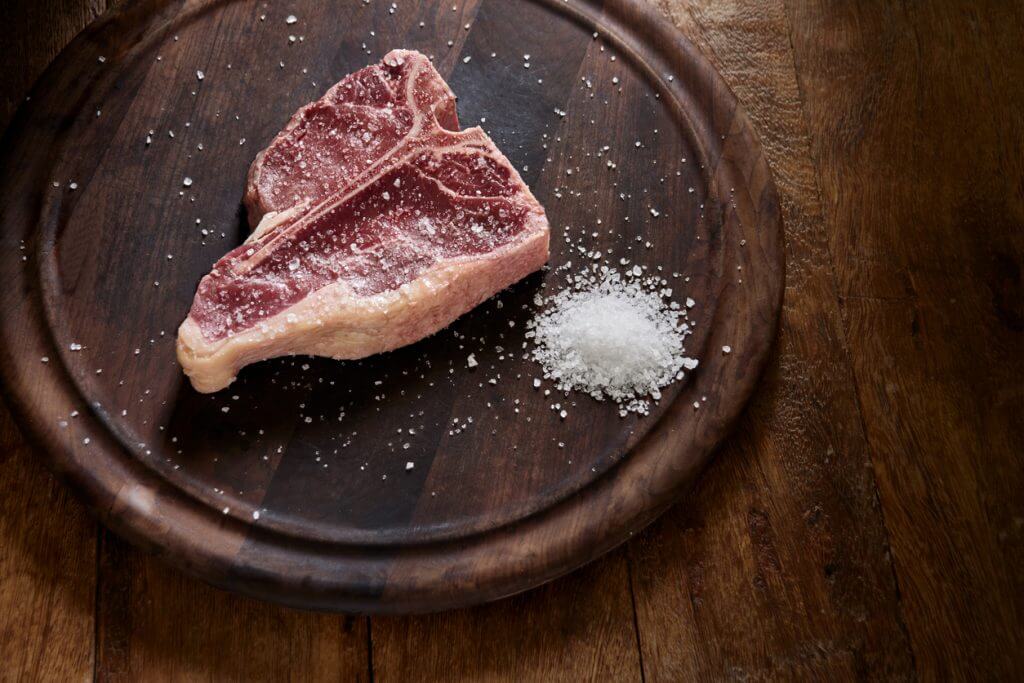As steak lovers know, a mediocre piece of meat is incredibly uninspiring and disappointing. Struggling to cut and chew each bite after hoping for a delicious steak isn’t easy. While we should be grateful to even have food, steak lovers naturally strive for a great meal each and every time. Among the many methods of improving a steak are dry aging, wet aging, tenderizers, enzymes, and more. These methods all help to some degree, but dry aging seems to be the favorite at the moment. However, there is another method called dry brining that’s gaining popularity because of how simple, cheap, and effective it is.
Why Aging Beef Works so Well
The process of dry aging helps break the meat down by own enzymes. Furthermore, the process of enzymatic predigestion helps to concentrate the flavor, improve the texture, and break down the collagen. It is a process that typically lasts anywhere from 2 to 6 weeks. Some people experiment with longer times for an even bolder flavor. However, this can backfire with a little too much funkiness for some palates.
Keeping the aging process in the 2-6 week range is a safer way to prevent any potential off-putting flavor. Without a doubt, there will be a vast improvement if you know what you’re doing. Aging meat has been something that’s been utilized for thousands of years, but has recently gained momentum. As a result, restaurants and supermarkets all around the world now offer dry-aged cuts of beef.
Dry aging steak has the ability to turn cheap cuts of beef into good quality, and good cuts into great quality. However, there is one drawback of this method. It is time consuming and there’s a learning curve for those that want to try it at home. It requires proper temperature and moisture conditions to be done safely. Which means it’s probably best to leave it to the experts if you want a consistent product without having to possibly dump it out.
Another issue with this method is that it is necessary to trim the outside after the process is finished. As a result, the yield decreases considerably depending on the aging range. Hence, the higher price for dry aged beef. Despite this, aged steaks are selling very well all around the world because of the superior product it produces. Many places like to utilize wet-aging for beef as well.
The Simplicity & Effectiveness of Dry-Brining

Dry brining is another ancient method that’s been revived in recent times. Part of the allure is its incredible simplicity. In addition, it is virtually free of any costs or need for materials and takes very little time. It is even possible to dry brine a steak that’s already been aged for a highly concentrated product. With dry brining, the yield doesn’t decrease unless it is left for too long. Timing is everything with this method.
Dry brining is done by simply salting both sides of a steak like is normally done and letting it sit for an amount of time. Some add around 20-30% more salt than what is normally added right before cooking a steak. It may be advantageous to use a decent quality sea salt as opposed to cheap table salt. As stated above, timing is absolutely everything when it comes to this method.
What is the Ideal time for a Dry-Brine?
With dry brining, results will backfire if left for too long. First, you salt both sides of your steak as mentioned above. The key is to not go too heavy or too light on the salt. Next, leave it in the fridge for around 12-20 hours. This is usually the range of time that produces the most consistent results. The rack or tray needs to allow the steak to be exposed to some air on the bottom side.
Experiments of two or more days have yielded horrific results at times. Yet, when done correctly, people feel that dry brining improves the steak to a surprising degree. However, don’t expect miracles from this method. It will not break down collagen and improve the texture like good aging processes can. Nevertheless, the salt penetrating the meat for an extended period can make it juicier, more flavorful, and more tender.
There are some places online saying that a longer dry brine will promote the same results. This hasn’t been the case with many people that have tried it for themselves. Keeping it for too long makes it chewier, stiffer, and decreases the yield. The steak will actually be worse than the original if you leave it for too long. Even at the 24-30 hour mark is sometimes too long and the beef will begin to toughen. Give it a try and you may be pleasantly surprised if executed properly. Bon appetite!

